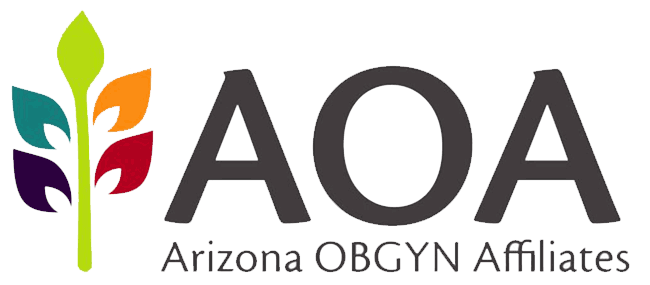Postpartum Care
The six week period of time after delivery is called the “post-partum” period.
During this time you will recover from both pregnancy and delivery.
Baby time
In the next few weeks you will be getting to know your newborn.This getting-acquainted time, called bonding, takes priority over any other activity in your home. Give your baby the gift of your undivided attention.
Breast Care
Bottle feeding mothers should wear a snug bra (a sports bra is ideal) day and night in the first week following delivery. Avoid any stimulation to the nipples (even in the shower). Some mothers prefer to “bind” the breasts with an ace bandage. Keeping the breasts well supported will help to suppress the production of breast milk.
Breastfeeding mothers will begin producing milk (lactating) within 72 hours of establishing breastfeeding. Breastfeeding exclusively during the first two weeks of life is important (avoid formula feeding) to develop a good milk supply.
Nipple care is especially important during the first two weeks of lactating. Keep the nipples dry. If you use breast pads, change them frequently. Let the flaps down on your nursing bra to get air to the nipples. Use a skin protectant such as Lansinoh. Vitamin E oil is also a favorite. These products do not have to be washed off prior to breastfeeding.
During these two weeks you may become “engorged” periodically. Engorgement is when the breasts are full of milk. Over the days and weeks to come your baby’s appetite and your breast milk production will find a balance. You may become so engorged that your breasts are painful, or the baby is unable to attach to a full nipple. Heat, massage and even pumping for one minute prior to breastfeeding can be very helpful.
Drink lots of water, take your prenatal vitamins, calcium supplement and fish oil capsule to improve the amount of milk you make and the nutritional content.
Mastitis is a breast infection. Breast infections during lactation can be serious. If you have a fever over 100 degrees with red, swollen, tender areas in the breast, please contact the office immediately. Washing your hands before handling the breasts and nipples will reduce the bacteria that can enter thru tender nipples in the first few weeks of lacatating.
Local lactation specialists offer education and support for breastfeeding moms. You can find listings in the phone book. A local group called La Leche League offers support, education and encouragement.
Breast pumps can be a useful tool for breastfeeding moms, especially if you will be returning to work and want to continue breastfeeding. The Medela pump is one of the best available to women. Consider renting an electric pump for home use. Check at medical supply stores for availability.
A great deal of information is available on line:
- www.llli.org
- Parents.com/baby/breastfeeding/tips/
- Pediatrics.about.com/od/breastfeedingtips/Breastfeeding_Tips.htm
- Breastfeeding.lifetips.com
Bowel Care
Any product at the drug store can be used to improve bowel function during the post-partum period. If you are having rectal pain, itching or bleeding, you may have hemorrhoids. Most hemorrhoids will resolve in the next two months with good bowel care.
Hemorrhoids are dilated blood vessels from the rectum. Abdominal pressure during pregnancy and straining to move your bowels causes blood to pool and dilate rectal vessels. Sometimes these vessels will get so large that they will protrude from the rectum. These external hemorrhoids or blood vessels will heal faster if they are pushed back into the rectum. Using lotion, Vaseline, or a soapy finger depress the vessel until it is flat and then push it back up into the rectum as far as you can reach (about 2-3 inches). The vessels will likely come back out with straining (constipation, lifting the kids). Continue to replace the vessels until they heal. Products such as Tucks Pads, Anusol cream or hydrocortisone cream can reduce itching and pain.
Hemorrhoids that persist longer than two months after delivery may require medical attention. Your doctor can recommend a colo-rectal surgeon to assist you.
Bladder
The fluid that you accumulated during pregnancy, labor and delivery will shift to your kidneys over the next 5 days. Expect to urinate often and sometimes in large amounts. Most women experience some difficulty with bladder control during the next few weeks. You may not have good bladder sensation. Some women will leak urine during their recovery. As you continue to recover and the pressure in your abdomen decreases and the swelling recedes, your bladder function will improve.
Kegel exercises will help to thicken and strengthen the muscles that surround the bladder neck. Squeeze and holding the pelvic floor muscle for 10 seconds, relax for 10, squeeze for 10, etc. Your goal: 50 Kegel’s a day.
Bleeding
You will bleed from the vagina for up to 6 weeks. Use only pads during this time.
During the first week your bleeding will be bright to dark red. You may pass some small clots or fragments of blood, especially after resting/napping/sleeping.
In the next 4-5 weeks your bleeding should taper off, becoming dark red to brown and then yellow. Some days you may not bleed at all and then bleed again tomorrow. You will bleed more after activity (trip to the grocery store, etc).
Soaking pads or using more than two pads an hour is not normal. If your bleeding is this heavy, you should go to bed and call the office for advice.
Your first period will arrive 5-6 weeks after delivery. This period can be long, heavy and painful. This is a normal part of recovery. If you are breastfeeding, you may not have a period until 2 months after you stop breastfeeding.
Incision Care
Your episiotomy (the stitches at the vaginal opening) will heal quickly. Keep them clean by spraying them with water after using the toilet and changing your pad frequently. Soaking in 4-6 inches of warm water can be soothing. In about a week your stitches will begin to itch as they heal. Soaking them will decrease the itching.
The suture in your stitches does not have to be removed. It will dissolve over the next 4 months.
Your cesarean section scar will have steri-strips on it when you leave the hospital. These tapes do not provide strength to the incision, but they do hold the skin edges together to help the cosmetic appearance of the future scar.
Run water over your scar in the shower daily. Keep it dry. Applying a sanitary pad over the incision will cushion it and absorb secretions. Drainage from the incision is common and not worrisome unless there is a large amount, you have worsening pain, are running a fever or are concerned about infection.
Remove the tapes in about a week. Just peel them off in the shower.
There is no need to apply any antibiotic ointment to your incision.
Expect your incision to be painful the first week and then tender over the weeks to come. Most women will have burning and/or shooting pain above and on the ends of the incision. The skin above the incision may be numb for many months.
Birth Control
Women should avoid pregnancy for at least 6 months following delivery to allow their bodies to heal. You may start a birth control pill 4 weeks after delivery. You can obtain an injection of Depo-provera 4-6 weeks after delivery. An IUD can be placed 8-12 weeks after delivery.
We recommend avoiding intercourse during the 6 weeks following delivery.
Emotions
“Baby Blues” describes the emotional roller coaster that is common in the first two weeks after delivery. This period is often marked by mood swings, tearfulness and feeling overwhelmed. Fatigue worsens the “Baby Blues”. Getting as much sleep as possible can be helpful. Getting help and support from family members can smooth the ups and downs of new parenthood.
If mood swings, irritability, anxiety and tearfulness persist beyond the first two weeks of the post partum period, you may be experiencing post-partum depression. Although obtaining support and child care assistance from friends and family may help you cope with these difficult feelings, you may also want to try medication to support your moods. Medication can reduce worry and anxiety and improve insomnia.
Please call and come to the office if your symptoms are worsening. We have ideas to help.






